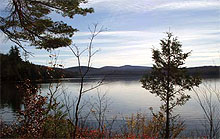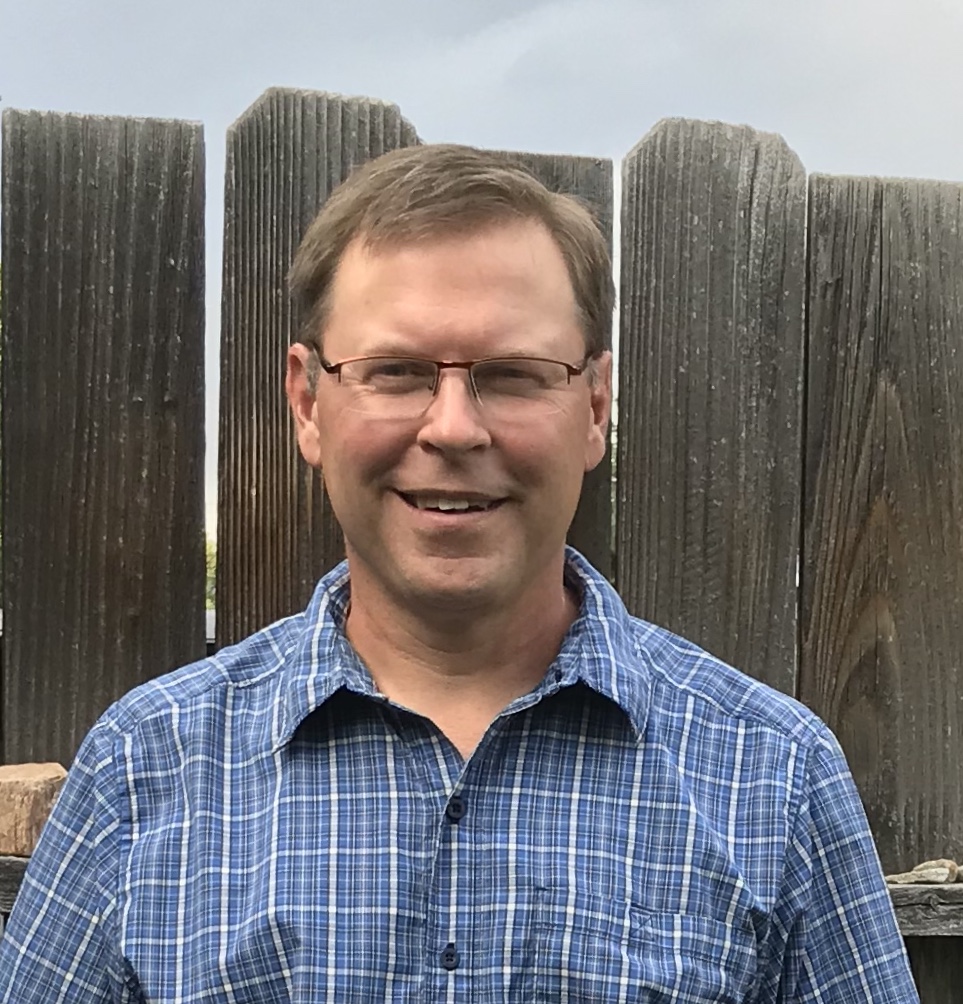
The brewery never came to be, but many generations later his family still owns and enjoys the land. Perpetuating a family forest is difficult. The Brandreths can look back on a string of ancestors who were ahead of their time and credit them with extending the family’s stewardship to the present day.
Brandreth’s property is tucked away in remote Hamilton County, New York—to this day the least densely populated county in the eastern United States. The newly named 890-acre Brandreth Lake and nearly all of the ten-mile Shingle Shanty Stream are the jewels of this land. Much of the area is mountainous, with northern hardwood stands interspersed with stately red spruce. The Shingle Shanty watershed is an area of wetlands, gravelly eskers covered by stands of spruce and fir, with occasional majestic white pines piercing the main canopy of the forest below.
Enlightened Planning
The second half of the 19th century saw many individuals acquiring large tracts of forest land as family retreats in the Adirondack Mountains of New York. Brandreth’s purchase predated this—not surprising for a man who was an innovator in more ways than one. An immigrant from England, he made his mark producing “Brandreth’s Pills,” a patent medicine that was used primarily as a laxative. He was an early pioneer in advertising, so much so that P.T. Barnum credited him as inspiring his grand approach to promoting his circus.
Three of Benjamin Brandreth’s 13 children took an abiding interest in the property. Eschewing the luxury of Adirondack Great Camps that were cropping up on similar properties, the Brandreths embraced the bucolic simplicity of the outdoors. Paulina Brandreth, Benjamin’s granddaughter, exemplified this, spending her days in the rustic splendor of sporting pursuits. A phenomenal hunter, she was also an outdoor adventure writer. As a woman ahead of her time, she used the pseudonym “Paul Brandreth” for her book Trails of Enchantment and numerous articles for Forest and Stream.
As the family grew, a minor building boom took place to accommodate everyone. Although cluster development was not widely adopted until the 1990s, the Brandreths embraced this method nearly a century earlier, making a conscious effort to concentrate development on one portion of the north shore of Brandreth Lake. The view of the lake from their small village of camps remains unspoiled, as are views of the surrounding landscape for boaters from the lake itself.
There is a long history of logging the property’s abundant timber. The heyday of lumbering operations came in 1892 when the Adirondack and St. Lawrence Railroad provided a commercial link to the outside world. The Brandreth Corporation built its own railroad—the 12-mile Mac-a-Mac Railroad—to transport logs to the main line. A sawmill and village, now abandoned, sprung up at Brandreth Station.
Uncommon Tenancy
A family forest is faced with an ownership challenge every generation or two. By the 1950s, the Brandreths were having growing pains. While the number of people using the property had grown, just a few of them were bearing the property tax burden. As a tax-cutting measure, the Brandreth Corporation sold more than 6,000 acres in two tracts to two family members and donated 9,000 acres to Syracuse University, with recreation rights reserved to the family in perpetuity. The family had the foresight to retain the first right of refusal if this land was ever sold.
Having shed some of the tax burden, family leaders looked for a way to ensure fairness and continued ownership. Tenancyin-common ownership means that two or more people may have a transferable ownership share in a property, independent from the other owners. The Brandreth Park Association was born as a vehicle for providing each family member a voice in the park’s governance and ownership. A total of 120 shares was created in the 10,000-acre area surrounding Brandreth Lake. While individuals own their buildings, the association owns the land beneath them. The association provides governance and coordination of activities, but limits the ability of any one individual to make sweeping decisions affecting each of the others. As a condition of ownership, a share may only be transferred to a descendent of a current Brandreth family owner. This means that the only way the entire property could be sold to an outside interest is through a unanimous decision of all of the owners—a highly unlikely possibility.
Syracuse University already had substantial forest holdings in the Adirondacks, and several years after the Brandreth’s donation they approached the family with an offer to sell it back. This opportunity gave rise to Brandreth Associates, a partnership in which many Brandreth Park owners have an interest, but only majority partners make decisions. The land was reacquired and some years later Brandreth Associates sold all but 2,240 acres adjoining the park to International Paper Company (IP), reservinging recreation rights in perpetuity. Years later, in hindsight, other restrictions on IP’s use of the property would have been desirable, but this transaction took place prior to the widespread use of conservation easements. The two other family properties made similar deals with IP. Brandreth Associates retained a 25-year first right of refusal if IP sold the property. This would prove to be one year too few.
Cutting Timber and Taxes
Property taxes are the bane of forest landowners in New York State. Non-resident forest landowners keep the land in open space, do not send children to local schools, require few municipal services, and are rewarded twice each year with hefty tax bills. The Brandreths hoped to avoid the fate of nearby properties, where sustainable practices have been abandoned in the pursuit of quick revenue.
In 1992, the family took an important step in the continued stewardship of their properties by enrolling them under the New York State Forest Tax Law. This law provides an 80 percent exemption in the property tax assessment of eligible forest land, in exchange for a longterm commitment of the land to timber production. An initial ten-year obligation is followed up by rolling annual decade-long commitments, with substantial penalties for withdrawal. Enrolled land must follow a detailed forest management plan, prepared at the landowner’s expense and approved by the State Department of Environmental Conservation.
The upshot of this enrollment is that funds that were devoted to property taxes can now be used for stewardship of the land—improving roads and trails, employing caretakers, stocking fish, and planning for the future. The property tax break afforded by the Forest Tax Law allows the family to schedule timber harvests to correspond with desired conditions in the forest and market realities. There is no pressure to provide a set amount of annual income or to harvest timber during conditions of uncertain markets.
Easing into the Future
Each generation faces its own challenges and opportunities when it comes to perpetuating a family forest. The Brandreths addressed the latest challenge with a creative arrangement of ownership rights. In 2001, a year after Brandreth Associates’ first right of refusal expired, International Paper Company sold the Shingle Shanty Tract (subject to Brandreth’s recreation rights) to the Nature Conservancy (TNC) as part of a larger transaction. Large-scale land sales in this region often have political undertones, and this parcel was a lesser part of a larger transaction that began then—Governor Pataki’s “march to a million” acres of open space protection.
The Nature Conservancy sold a restrictive conservation easement on this parcel to the Sweet Water Trust, ruling out development and timber management. Without timber, recreation, or development rights, fee ownership of this parcel means little more than annual property tax bills. Despite this, TNC was actively attempting to sell the property to other parties. The potential for another outside owner becoming involved in the land was alarming to the Brandreth family. Some believe that the State of New York and others were using this situation as leverage to get public access to the coveted Shingle Shanty Stream.
A group of family members devised a clever plan to protect the Brandreth legacy. Late in 2007, family members created Shingle Shanty Preserve and Research Station, a nonprofit organization whose mission is to “facilitate the study and dissemination of learning about the environment, geology, and wildlife of the Adirondacks.” A small family group secured ownership of the land through a multi-faceted deal with TNC that consisted of a conservation easement restricting development on a 2,240-acre parcel adjoining the Brandreth Park and other considerations totaling $1.2 million. The property is now known as the Shingle Shanty Preserve, and is dedicated to the nonprofit’s mission. The land will be available to outside parties, by permit, for research and educational activities.
Now and Forever
Today’s Brandreth Park Association (BPA) has taken a hard look at the future and is being proactive to ensure the family legacy. The leadership structure includes a president, a vice president for internal affairs (caretaking, roads, forestry, etc.), a vice president for external affairs (government agencies, press, local government), and eight committees contributing to various aspects of management. Any owner can opt to serve on a committee.
According to BPA president Judson Potter, there is a twopart effort to prepare the next generation for their ownership responsibilities and “inculcate them in the culture of the park.” Family time spent enjoying the park is enough to begin the enchantment for most children but, as an additional measure, children attend classes on traditional outdoor activities. Younger adults who haven’t yet become owners are allowed full use of the property through an associate membership. These associate members enjoy the park at a reasonable cost and are encouraged to participate in the various BPA committees.
Seven generations and 157 years later, Brandreth Park includes family members of all ages and backgrounds, visiting from all over the country—all descendants of Benjamin. Virginia Brandreth, the association’s current vice president for external affairs, sums up their hope for the next hundred years:
“That the family can look out on Brandreth Lake and see it very much as it is today; that they have inherited the full 27,500-plus acres that exist in the various family ownerships knowing that Brandreth Lake, our ponds, mountains, and Shingle Shanty Stream look to them the same as they do to us today.”
Coming generations will undoubtedly face new challenges in protecting this family forest, but they will be given an intact resource, with many safeguards already in place. The Brandreths have proven that family ownership and stewardship go hand in hand.



